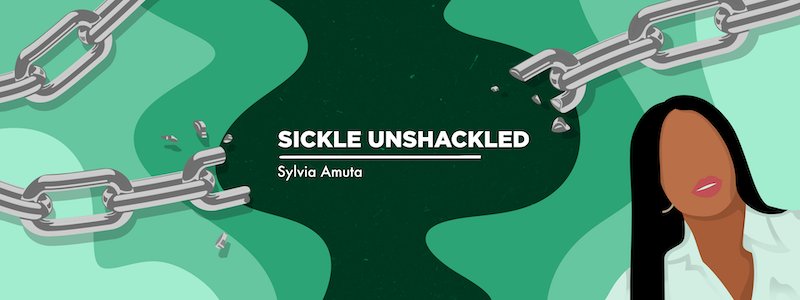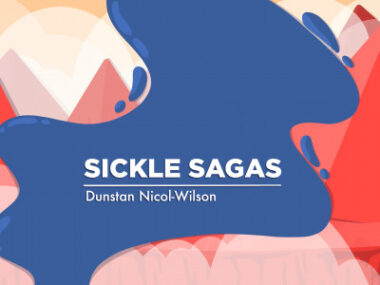5 pain management strategies that benefit our family
These methods help my young cousin cope with sickle cell pain crises
Written by |

Caring for my young cousin Ada, who battles sickle cell disease, has taught me so much about the ways in which chronic pain can wear down even the strongest of spirits.
Each pain crisis feels like a wave crashing over her, relentless and unforgiving. With every failed attempt to ease the pain — be it a new medication or another procedure — there’s a sense of growing desperation. It’s like we’re caught in a never-ending tug of war with a pain monster, both of us clinging tightly to our end of the rope. The harder we pull, the more the monster digs in, dragging us closer to a pit of despair.
Yet through all the struggles, we’ve learned that sometimes the best thing we can do is to drop the rope — not to surrender, but to shift our focus. Instead of becoming consumed by the pain, we’ve discovered ways to manage the emotional and mental toll it takes on Ada and us as a family.
Following are some of the pain management strategies that have made a difference in our lives:
1. Distraction techniques
One of our first realizations was that distraction could be our ally. When a pain crisis hits, Ada and I often turn to her favorite TV shows, do puzzles, or simply flip through a picture book. It’s not a cure, of course, but it shifts her focus from the pain to something else, even for a little while.
We’ve also turned distraction into a family affair by playing board games, for example, or telling one another stories. In these moments, laughter sneaks in, and the pain takes a back seat, even if just for a bit.
2. Journaling
Ada and I have also taken up journaling. For her, it’s a way to put words to the thoughts that crowd her mind — the frustration of her body not doing what she wants it to do, or the anger at missing out on a birthday party because she’s too unwell.
For me, journaling has become a way to set small goals and celebrate little victories. Sometimes, it’s as simple as writing down, “Today, Ada smiled.” Writing together, we’ve created a space where the focus is on what we can control, rather than on what’s beyond our reach.
3. Identifying triggers and adjusting
Pain often comes with fear about what might trigger the next wave of agony, so we’ve made it a family project to track Ada’s pain triggers.
We noticed, for example, that cold weather often brings on her crises. So we layer her up in sweaters and blankets when temperatures drop, and we keep a heat pack ready at her bedside. It’s not a perfect solution, but being proactive has helped Ada regain a sense of control, knowing she can take small steps to protect herself.
4. Shifting energy: Embracing what we can do
There’s a fine line between acknowledging pain and being consumed by it. When Ada’s pain flares, the sadness in her eyes is hard to miss. She’ll say, “I can’t even play outside like my friends anymore.”
In those moments, I remind her (and myself) that we still have choices. We focus on what she can do, such as drawing, reading, or simply enjoying the warmth of the sun from the window. It’s a lesson I try to live by, too — redirecting my energy into planning fun activities for the days when she feels a little better, rather than dwelling on the days when she doesn’t.
5. Acceptance: Dropping the rope
Perhaps the most profound lesson has been learning to let go. We’ve stopped fighting the fact that there will be bad days when the pain refuses to be ignored. On those days, we drop the rope. It doesn’t mean that the pain disappears or that it’s any less real. But by not resisting it with all our energy, we create room to breathe.
This acceptance has brought a measure of peace, allowing us to focus on finding comfort, whether through gentle music, breathing exercises, or simply holding each other’s hand in silence.
Managing chronic pain, especially when it’s part of a condition like sickle cell, is never easy, and every family’s journey is unique, but I hope these reflections can offer some comfort to those walking a similar path.
Note: Sickle Cell Disease News is strictly a news and information website about the disease. It does not provide medical advice, diagnosis, or treatment. This content is not intended to be a substitute for professional medical advice, diagnosis, or treatment. Always seek the advice of your physician or other qualified health provider with any questions you may have regarding a medical condition. Never disregard professional medical advice or delay in seeking it because of something you have read on this website. The opinions expressed in this column are not those of Sickle Cell Disease News or its parent company, Bionews, and are intended to spark discussion about issues pertaining to sickle cell disease.






nasr
hi thank you for your info regarding sickle cell pain my daughter suffers form pain its relay very hard to see your daughter like that
please advise me what allways can be dan in colod wether
thank you
Mary Blackburn-Jackson
I have the sickle cell trait, but my son's father denied that he had the trait. I have been an advocate for my son over 39 years. Certain hospitals are not aware of the emergency of sickle cell crisis. I am a RN and I have advocated for other patients. through their parents. It is very disturbing that many of the medical field views a sickle crisis as just a painful crisis it may cause, they are not aware of the complications. When I call the American Medical Association, they only say they were given information. This is the answer I receive when my son has complications. We need a different way of spreading this information.